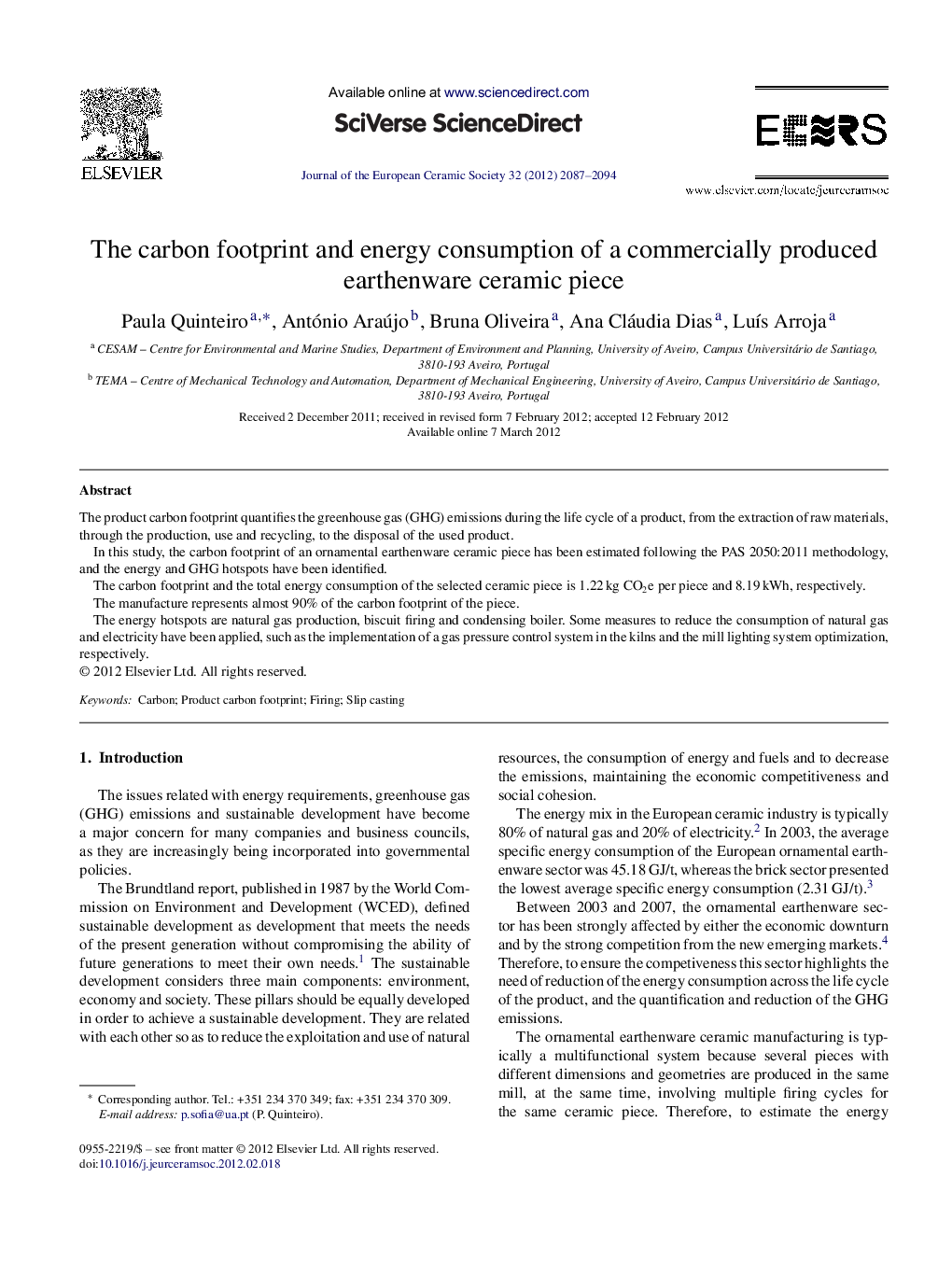| Article ID | Journal | Published Year | Pages | File Type |
|---|---|---|---|---|
| 1475280 | Journal of the European Ceramic Society | 2012 | 8 Pages |
The product carbon footprint quantifies the greenhouse gas (GHG) emissions during the life cycle of a product, from the extraction of raw materials, through the production, use and recycling, to the disposal of the used product.In this study, the carbon footprint of an ornamental earthenware ceramic piece has been estimated following the PAS 2050:2011 methodology, and the energy and GHG hotspots have been identified.The carbon footprint and the total energy consumption of the selected ceramic piece is 1.22 kg CO2e per piece and 8.19 kWh, respectively.The manufacture represents almost 90% of the carbon footprint of the piece.The energy hotspots are natural gas production, biscuit firing and condensing boiler. Some measures to reduce the consumption of natural gas and electricity have been applied, such as the implementation of a gas pressure control system in the kilns and the mill lighting system optimization, respectively.
